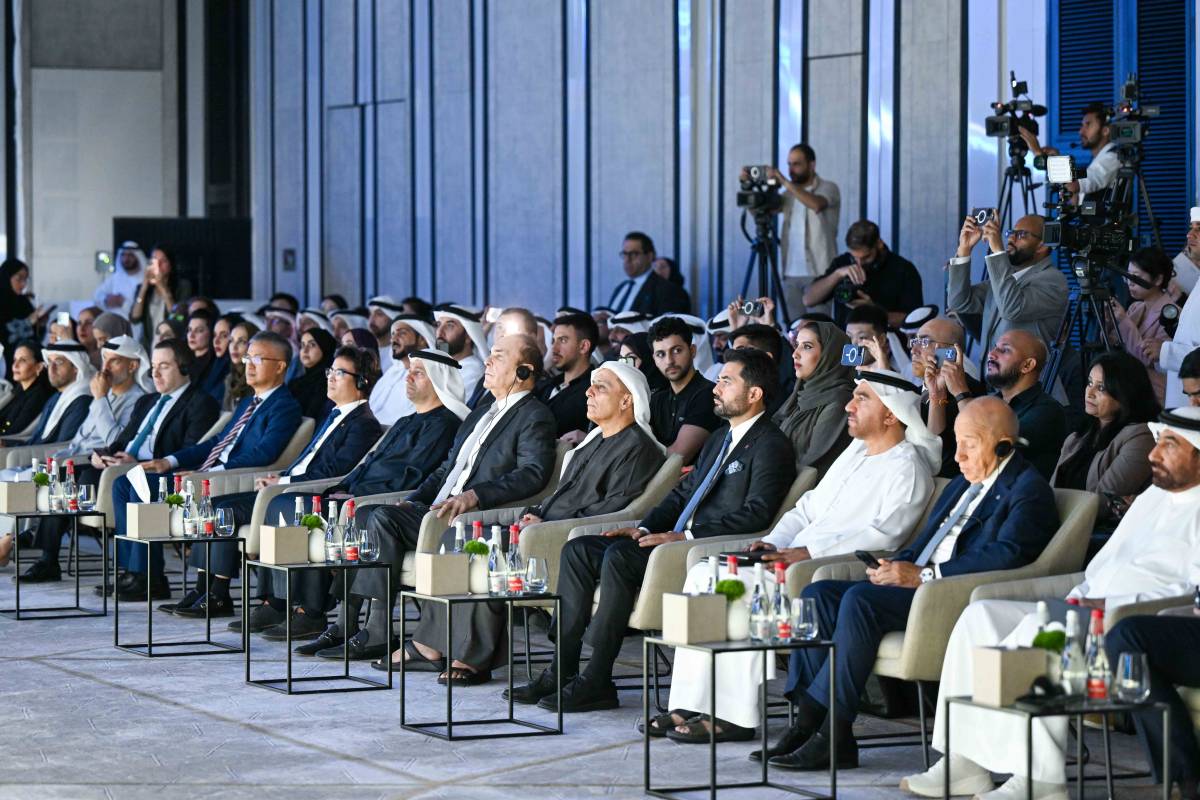Dubai awards Dh20.5 billion contract for Metro Blue Line; construction starts in April
Mega project to complete by September 2029, coinciding with Metro’s 20th anniversary

Dubai’s Roads and Transport Authority (RTA) has made a significant leap forward in its public transport development plans with the announcement of the award of the Dh20.5 billion contract for the Dubai Metro Blue Line project.
The deal, signed with the MAPA-LIMAK-CRRC consortium, aims to extend the city's iconic Metro network by adding 30 kilometres of track and 14 stations. This expansion is projected to serve more than one million residents by 2040.
At a press conference held at the One&Only Za’abeel Hotel, Mattar Al Tayer, Director General and Chairman of the Board of Executive Directors of RTA, outlined the visionary scope of the project. The announcement was attended by the consortium’s key representatives, including Mehmet Nazif Gunal, Chairman of MAPA, and Nihat Özdemir, Chairman of LIMAK.
Dubai Metro Blue Line
Al Tayer highlighted that the new Blue Line project forms a key component of Dubai’s comprehensive urban growth strategy. It builds upon the success of the Dubai Metro, which has been the backbone of the city’s public transport system since its first line opened in 2009. "The Dubai Metro now accommodates over 850,000 passengers daily and has transported nearly 2.5 billion riders," Al Tayer remarked.
The Blue Line is designed to integrate seamlessly with Dubai’s existing metro system. It will feature two distinct routes, connecting vital areas like Al Rashidiya, Dubai Silicon Oasis, and Dubai Creek Harbour. The project, which includes a 1,300-meter bridge crossing over Dubai Creek, will also include three major interchange stations: Al Khor, Centrepoint, and International City (1).

The Blue Line is expected to be completed by September 2029, coinciding with the 20th anniversary of the launch of Dubai’s Metro Red Line. Al Tayer further stressed that the line’s completion will boost connectivity between key urban centres, ensuring easy access to residential, commercial, and cultural hotspots.
By 2040, the line will have the capacity to serve 320,000 passengers daily, making it an essential transportation link for both residents and visitors. Al Tayer noted that it would also contribute to the vision of the Dubai 2040 Urban Master Plan by reducing traffic congestion by 20% and boosting land values near its stations by up to 25%.
Global Consortium
The Dubai Metro Blue Line contract was awarded after an international tender process, which saw five alliances competing. In the end, the MAPA-LIMAK-CRRC consortium was chosen for its technical expertise and proven track record. MAPA and LIMAK will oversee civil works, while CRRC will be responsible for rail systems. Al Tayer emphasised that this project would meet the highest standards of engineering and design.
“We fully recognise the significance of the Blue Line as part of Dubai’s 2040 vision,” said Mehmet Nazif Gunal. He highlighted that the project will play a critical role in shaping Dubai’s future infrastructure, supporting sustainable growth, and enhancing the city’s global competitiveness.

Sustainable infrastructure plans
The Blue Line’s environmental impact will be significant. It is set to become the first transport project in Dubai to meet platinum-grade green building standards, setting a new benchmark for sustainable urban development. Al Tayer revealed that the line would generate Dh56.5 billion in economic benefits by 2040, largely through time savings, fuel reduction, fewer accidents, and lower carbon emissions.
Moreover, the line’s design will prioritise sustainability, with a focus on reducing energy consumption and ensuring efficient use of resources throughout its construction and operation.
Record-setting station design
A standout feature of the Blue Line will be its architectural marvels. The Dubai Creek Harbour station, designed by Skidmore, Owings & Merrill (SOM), will serve as a landmark with its futuristic design. This station, along with the International City (1) station, which will become the largest underground interchange station in Dubai’s metro network, promises to reshape the city’s transport infrastructure.
Economic impact
The Blue Line will not only offer enhanced connectivity but is also expected to provide a substantial economic boost. By facilitating easier access to commercial hubs and residential areas, it will open up new opportunities for businesses and improve the quality of life for residents. With its 46,000 passengers per hour capacity, the Blue Line is set to alleviate congestion and support urban development across the city.

This infrastructure project is in line with the Dubai Economic Agenda D33, which aims to make Dubai one of the world’s top cities for business, tourism, and living. The project is expected to yield considerable returns, with every dirham invested expected to generate Dh2.60 in social, economic, and environmental benefits by 2040.
A 20-year vision
Looking ahead, the Blue Line’s completion will contribute to expanding Dubai’s public transport system, which is currently the world’s longest driverless metro network. The project’s full completion will bring the total length of the metro network to 120 kilometres, with an additional 11-kilometre tram extension. This expansion ensures Dubai’s position as a global leader in sustainable and efficient public transport systems.